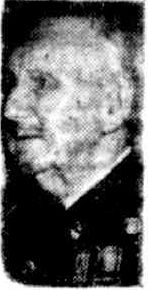




One of the best-known licencees of Saywell’s New Brighton Hotel, Lady Robinson’s Beach, was Mr. Harry Figg. Harry Figg gravitated to Brighton-le-Sands after being Minehost of the Harvest Home Hotel, Hobart, but prior to his arrival in Australia he had seen very stirring times in South Africa. During the Zulu wars Mr. Figg had a unique opportunity of seeing the great Zulu warrior-leader, Cetewayo, at close quarters and witnessed his final capitulation to the British after the Zulu defeats at Rorke’s Drift and Ulundi.
In the article that follows (reprinted from the local press of March 1902) Mr. Figg recalled some of his memories. He had helped to bury the 806 Europeans who were slaughtered, almost to a man, by the Zulus at Isandhlwana on 22nd January, 1879. On the following day began the epic defence of the mission station at Rorke’s Drift, which has gone down in history as the place where the greatest number of Victoria Crosses were awarded for a single action. This episode inspired the splendid film “Zulu”, shown in Sydney last year.
An African Veteran And Hero
Although still young in years, we can see few better specimens of the veteran, and of those who have helped to build up the Empire during the last thirty years, than our old friend, Mr. Harry Figg, of Lady Robinson’s Beach. The demonstration of Saturday last goes to stir up the martial and patriotic spirit of the bygone days in those who have served their country faithfully and well; and to bring before our notice deeds and services to our country, which otherwise would be buried in oblivion. The more so as those who bear the brunt of battle column. He took part in the engagements at Umbalaze, Ulundi, and was with the first column through Isandaliwana after the massacre of the 24th Regiment. A chat with Mr. Figg on his personal experiences while under canvas in Zululand and South Africa generally is of special interest at this juncture, and the tender affection displayed by the wearer for his medals must be seen to be appreciated. Needless to say, Mr. Figg and his medals were in strong evidence today, when the welcome news of the relief of Ladysmith was so enthusiastically discussed.

Extract from Hobart Mercury, March 3, 1900
Many old soldiers put on their medals in honour of “Ladysmith Day”. Our representative noticed Mr. Harry Figg, of the Harvest Home, wearing two, which, on inquiry, proved to be the South African 1878-9 bar, Ekowe, and clasp, Ulundi, and the Ashantee, 1873-4. In cheering the men so gallantly going to the front now, let us not forget the veterans, whose toil and blood in years gone by paved the way for the Empire of today.
This article was first published in the June 1965 edition of our magazine.
Browse the magazine archive.

